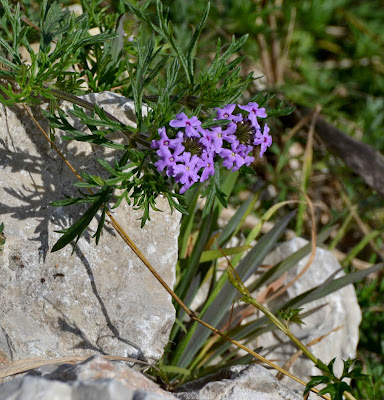Leon Creek Greenway, Cathedral Rock Connector Trail
between the Cathedral Rock Park Trailhead and the Lindsay Pl Trailhead
Today's photos:
The last time I walked this trail was August 1st of last year and the title for the post was "The Peak of Summer." Now, there are still about two weeks left before the Spring equinox, but it didn't feel that way today with a high of 87º (F). This being South Texas, another cold front will blow through early in the morning tomorrow and bring the temperature back to seasonal normal with highs around 70º (F).
This trail is in the flood plain of Culebra Creek from Cathedral Rock Park to its confluence about a mile or so downstream with Leon Creek. The trail passes through a more complex riparian ecosystem than most of the creekway trails in San Antonio. This is apparently a result of a combination of the underlying geology and changes brought about by human occupation along the creek. Whatever the reason for the complexity, the trail always makes for an interesting walk.
- The first photo is a flower head on a White-brush. These are just beginning to bloom along the trail. The flower heads look almost identical to those on Kidneywood, but the leaves of the two plants are very different. Both plants have the common name, bee brush, because their flowers attract a large number of bees, but it adds to the confusion in identifying the two plants.
- The second photo is an American Snout butterfly enjoying the nectar of Agarita flowers.
- The third and fourth photos are a metallic green bee in the Genus, Agapostemon. There are approximately forty-five species in this Genus and, with my level of expertise, I wouldn't even begin to try to guess which species this one is. This bee is gathering nectar on a White-brush flower head.
- The fifth photo is an overview of the brush and grass lined creek bank. The sixth photo is a detail of one of the small trees that can be seen on the right side of the fifth photo. This is very typical South Texas brush.
- The seventh photo is Cochineal growing on prickly pear cactus pads. The fuzzy white spots are actually a protective cover the cochineal insect makes for protection. Cochineal insects are a major source of a highly valued bright red dye.
- The eighth photo is a Huisache tree in full bloom.
- The ninth photo is Scrambled Eggs. The insect on the flower on the lower left is too out of focus for me to identify. Someone who really knows insects might be able to identify it from its general appearance.
- The tenth photo is Prairie Verbena growing over a rock.
- The eleventh and twelfth photos are False Nightshade. There were a lot of these flowers by the trail just upstream from the Lindsay Pl Trailhead.
- The thirteenth photo is a Pearl Crescent butterfly. It is drinking nectar from the highly invasive, non-native plant, Bastard Cabbage. About the only good thing I can say about this plant is that it has provided a food source for a wide range of butterflies and bees during our ongoing drought.
- The fourteenth photo is an absolutely beautiful Live Oak tree with cirrus clouds in the background.














No comments:
Post a Comment